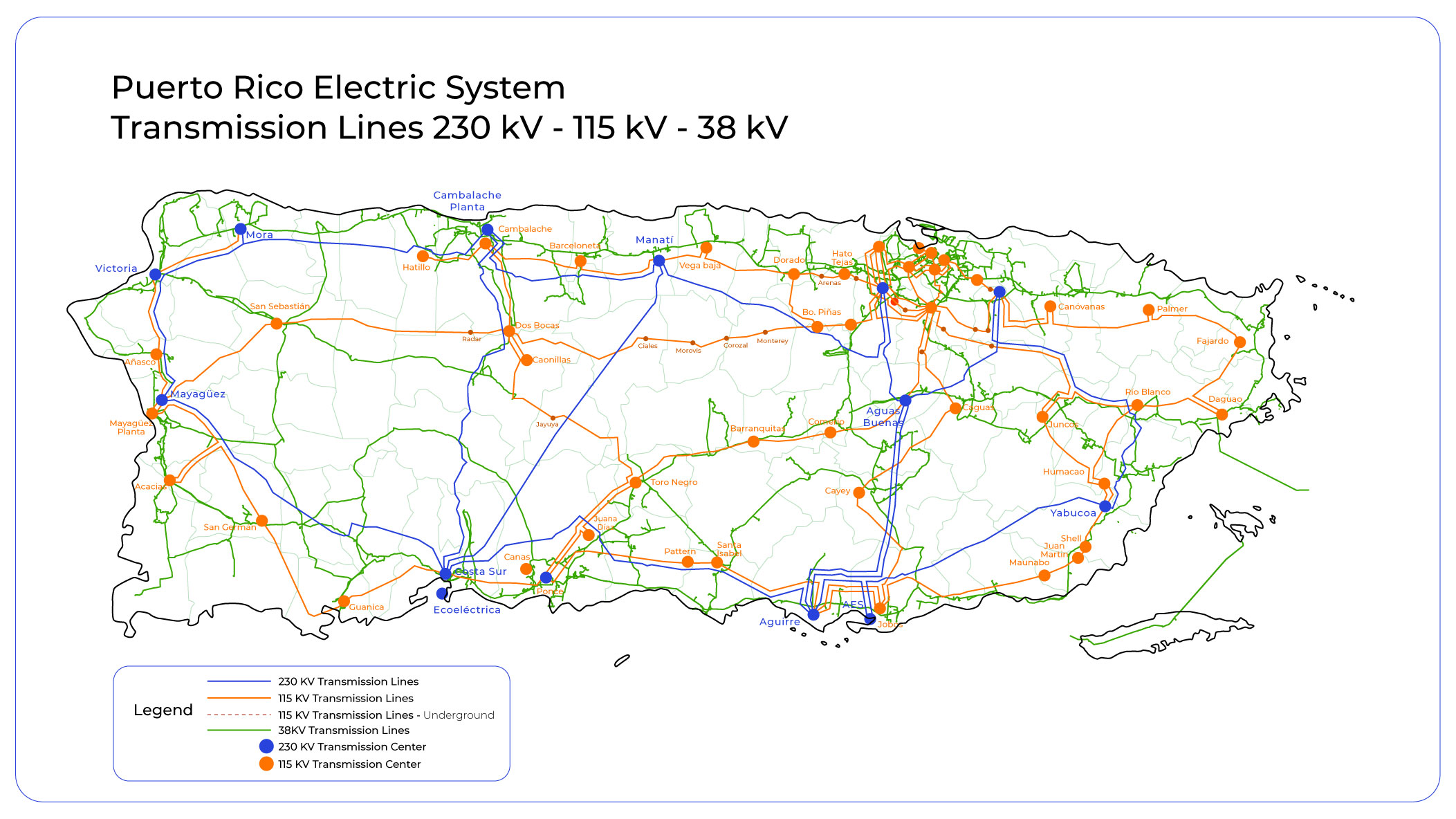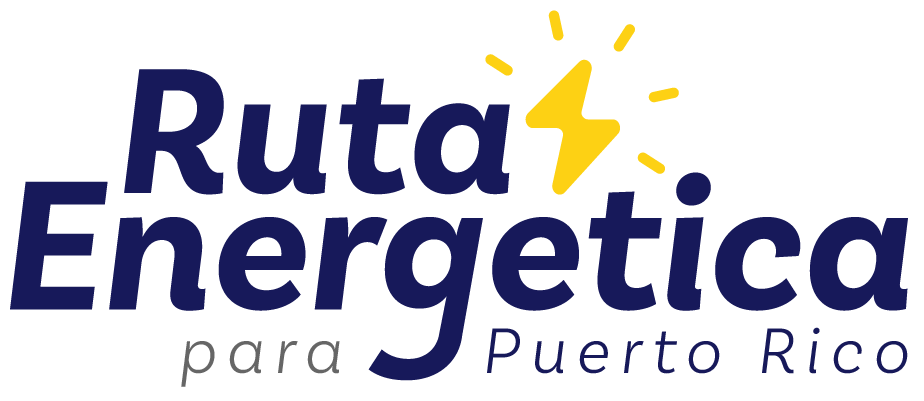Modernizing Puerto Rico’s Power Grid
Modern and efficient energy grids require regular upgrades to ensure and improve reliability, resilience, flexibility, and security—and to integrate more sources of electricity and storage. In Puerto Rico, decades of underinvestment in the electric power grid combined with impacts from extreme weather events and other natural hazards has resulted in the need for significant upgrades.
This page highlights a selection of ongoing and planned programs and projects to repair, remediate, and stabilize Puerto Rico’s energy grid. Some efforts will be funded by the U.S. Federal Emergency Management Agency (FEMA) and others by LUMA Energy’s budget. These projects are detailed in the FEMA 5-Year Plan, Fiscal Years 2025-29, a report that presents LUMA’s infrastructure investment plan for the next five years.
Grid Modernization Programs and Projects
Sections below provide more information on each program, including program description, goal and progress where stated, allocated funding amount, funding source, performance period, and project status (number of projects initiated [initial scopes of work submitted]; number of detailed project scopes submitted; and number of projects under construction or completed [obligated]).
Vegetation Clearing
Vegetation Management
Keeping vegetation away from power lines is essential to maintaining safe and reliable electric service. In fact, vegetation contact is one of the leading causes of power outages on the island. The chart below shows the number of miles of power lines that have been cleared of vegetation.
Not all power lines are the same, and the data includes three main categories:
- 38 kV lines – These are medium-voltage distribution lines that deliver electricity from substations to local areas, neighborhoods, and towns.
- 115 kV and 230 kV lines – These are high-voltage transmission lines that move large amounts of electricity over long distances, typically from power plants to substations where the voltage is reduced for local use.
- kV (kilovolt) – This unit measures the electric potential of the line. Higher voltage lines can carry more electricity and transmit it over longer distances with less energy loss.

Summaries FY2025 Report
The “miles cleared” column shows the amount of line that has already been cleared of vegetation. It is important to note that most of the vegetation clearing efforts to date have focused on distribution lines. The “federally funded” column indicates how much of this work was financed using federal recovery funds.
These efforts are essential to reduce the risk of power outages and improve the stability of Puerto Rico’s electric grid, especially during storms or extreme weather events. Regular vegetation management helps ensure electricity reaches homes, schools, hospitals, and businesses across the island without unnecessary interruptions.
| FY2025 YTD Miles Cleared | ||
|---|---|---|
| Voltage by Line | Federally Funded | Total Miles |
| Distribution | 106 | 836 |
| 38 kV | 0 | 76 |
| 115 kV | 0 | 497 |
| 230 kV | 0 | 308 |
| Total | 106 | 1717 |
| FY2025 Q4 Miles Cleared | ||
|---|---|---|
| Voltage by Line | Federally Funded | Total Miles |
| Distribution | 37 | 268 |
| 38 kV | 0 | 14 |
| 115 kV | 0 | 144 |
| 230 kV | 0 | 50 |
| Total | 37 | 476 |
| FY2025 Q3 Miles Cleared | |||
|---|---|---|---|
| Voltage by Line | Federally Funded | Total Miles | |
| Distribution | 3 | 179 | |
| 38 kV | 0 | 17 | |
| 115 kV | 0 | 98 | |
| 230 kV | 0 | 123 | |
| Total | 3 | 417 | |
| FY2025 Q2 Miles Cleared | |||
|---|---|---|---|
| Voltage by Line | Federally Funded | Total Miles | |
| Distribution | 42 | 177 | |
| 38 kV | 0 | 15 | |
| 115 kV | 0 | 142 | |
| 230 kV | 0 | 77 | |
| Total | 42 | 410 | |
| FY2025 Q1 Miles Cleared | |||
|---|---|---|---|
| Voltage by Line | Federally Funded | Total Miles | |
| Distribution | 24 | 212 | |
| 38 kV | 0 | 30 | |
| 115 kV | 0 | 113 | |
| 230 kV | 0 | 58 | |
| Total | 24 | 413 | |
Program: This program includes clearing vegetation from all 16,000+ miles of overhead transmission and distribution lines and performing strategic debris management and targeted herbicide application within line and feeder easement areas, including 300+ substation and telecommunication sites across Puerto Rico.
This program includes:
- Work to mitigate immediate vegetation risk, prioritizing areas that have the greatest impact to system reliability
- Ongoing efforts to clear and re-establish rights of way (the cleared pathways under transmission lines) to standard widths
- An immediate response for the highest risk sites that pose hazards to public safety or routinely experience tree-caused service interruptions.
The primary benefit of effective vegetation clearance is to reduce outages caused by vegetation-caused line faults.
Goal: Over the next several years, this program is designed to reduce the number of vegetation-related outages by an estimated 35%–45%.
Progress: LUMA is working closely with FEMA and COR3 on obligating the first projects to clear key portions of the distribution system and 38 kV lines in the San Juan area from vegetation that poses the greatest safety and reliability risks to the grid.
| Est. Cost: | $1,201,000,00 |
| Funding Source: | FEMA Public Assistance and Hazard Mitigation Programs |
| Est. Duration: | FY 2022–FY 2029 |
| Project Status: | Vegetation has been cleared from 66 miles of powerlines as part of vegetation management operations as described in LUMA’s Vegetation Management Progress Report. |
Transmission Line Rebuild
The transmission system moves bulk electricity from sources of generation to areas where the electricity is used. The transmission system moves electricity longer distances, at higher capacity and higher voltage, than the distribution system. In Puerto Rico, there are around 1,100 miles of high-voltage transmission lines (230 kV / 115 kV) and 1,400 miles of lower-voltage transmission lines, also known as subtransmission lines (38 kV). A properly functioning transmission system reduces the risk of cascading events (when a small disruption like a power-line failure triggers subsequent, larger failures) including blackouts, and can be re-energized through the black start process when necessary. Because of the importance of transmission lines, LUMA is aiming to leverage a significant amount of federal funds to rebuild them.
Program: The program aims to reconstruct transmission lines so they will withstand high winds and floods. The program’s tasks include:
- Modeling the transmission lines to verify system needs
- Upgrading all sizes of lines
- “Hardening” the system to withstand extreme events
- Rebuilding towers that connect the lines and reinforcing or replacing parts required
- Burying select transmission lines underground (called “undergrounding”) for reliability and redundancy
- Repairing the underground cable in the San Juan area.
LUMA will combine these activities with field assessments to identify equipment in need of repair or replacement.
Goal: The goal is to allow people improved reliable and sustainable service by bringing transmission lines up to industry codes and standards and mitigating any other issues identified during the analysis.
Progress: LUMA has worked with COR3 and FEMA to obligate the repair of a portion of the underground line in the San Juan area and continues to focus with COR3 and FEMA on the review of additional transmission lines.
| Est. Cost: | $3,414,000,000 |
| Funding Source: | FEMA Public Assistance and Hazard Mitigation Programs |
| Est. Duration: | FY2022-FY2034 |
| Project Status: | 43 projects initiated; 26 detailed project scopes submitted; one project under construction |
Distribution Line Rebuild
The distribution system delivers electricity to users at the point of use, such as homes and businesses. Distribution feeders —or power lines—connect the transmission system to customers at lower voltage than transmission lines (4kV to 13kV for distribution feeders). Each feeder typically serves a few megawatts (MWs) of use, or load. There are about 1,300 feeders in Puerto Rico, and each one covers a short distance, up to several miles.
Program: The program comprises major feeder reconstruction activities and replaces damaged or ineffective overhead and underground distribution lines. The focus is on rebuilding distribution feeders with poor reliability performance, and those that provide critical services to customers by targeting the worst-performing feeders first. The program includes upgrades to distribution infrastructure, 15 kV voltage class equipment for all new infrastructure, and the program prioritizes reconstructing distribution lines by replacing them with equipment that can withstand expected wind speeds in accordance with applicable codes and standards.
Goal: The goal is to improve electric service reliability, enhance resilience, meet industry codes and standards, mitigate safety concerns, reduce the frequency and duration of outages for customers, and support the integration of distributed energy resources, including rooftop solar. This program is expected to result in significant system improvements in the short term and incremental improvements for the remaining program duration.
Progress: LUMA is working closely with FEMA and COR3 on distribution feeder rebuild projects across Puerto Rico and deploying technologies that will substantially enhance the capabilities of the energy system.
| Est. Cost: | $4,160,000,000 |
| Funding Source: | FEMA Public Assistance and Hazard Mitigation Programs |
| Est. Duration: | FY2022-FY2034 |
| Project Status: | 25 projects initiated; 25 detailed project scopes submitted; 0 projects under construction |
Substation Rebuild
Substations are locations within the electric power system composed of transformers, circuit breakers, and other control equipment. Distribution substations are located at the intersection of the transmission and distribution systems, where high-voltage power is stepped down to lower voltage for delivery to customers’ meters.
Program: The program focuses on improvements to transmission and distribution substations to strengthen the grid, including:
- Hardening and modernizing substations
- Making upgrades to conform to the latest codes, industry standards, and practices
- Replacing electromechanical and electronic relays
- Relocating or mitigating substations in flood-prone areas
- Deploying new substations to meet industry standards.
Based on analysis conducted by LUMA, 86 substation sites are located within areas determined by FEMA to be susceptible to flooding. Prioritization was based on ranking aspects of reliability, resilience, risk, exposure, impact, and criticality to address the highest needs first, both to maximize the impact of investment and prioritize repairing the most critical items first.
Progress: LUMA, COR3, and FEMA have aligned on the obligation of 15 substation rebuild projects. This includes portions or entire rebuilds of six of the seven most critical substations, as well as other key substation repairs across Puerto Rico.
| Est. Cost: | $2,319,000,000 |
| Funding Source: | FEMA Public Assistance and Hazard Mitigation Programs |
| Est. Duration: | FY 2022–FY 2034 |
| Project Status: | 64 projects initiated; 40 detailed project scopes submitted; 19 projects under construction or completed. This includes portions or entire rebuilds of six of the seven most critical substations, as well as other key substation repairs across Puerto Rico. |
Advanced Metering Infrastructure Implementation Program
Advanced metering infrastructure (AMI) for electricity is an integrated system of smart electric meters, networks, and data management systems that enables two-way communication between utilities and customers. The system provides the ability to automatically and remotely measure electricity use, connect and disconnect service, and identify outages. Combined with customer technologies, such as smart appliances and thermostats, AMI allows utilities to offer time-based rate programs and incentives that encourage customers to reduce energy use during times of peak demand and manage their energy consumption and costs (Source: DOE 2016). LUMA does not currently have an AMI system, and the existing meters cannot meet the requirements of Act 17.
Program: The program includes exchanging approximately 1.5 million electric meters, building a communication network, installing systems to collect and manage meter data, and integration into the existing billing and outage management systems. The meters will provide data on outages, theft, voltage, and load data, as well as allow the operator to see real-time operating conditions and discover potential issues before they occur. The program will include Act 17 considerations, such as making net metering, demand response, and other programs universally available across Puerto Rico.
| Est. Cost: | $877,000,000 |
| Funding Source: | FEMA Public Assistance and Hazard Mitigation Programs |
| Est. Duration: | FY 2022–FY 2029 |
| Project Status: | Project obligated and underway. On Dec. 17, 2024, LUMA announced the selection of vendor Itron, a global leader in smart meter technology, to install 1.5 million across Puerto Rico. The installation will begin in the San Juan region and extend island-wide over the next three years. See press release here. |
Distribution Streetlighting
| Est. Cost: | $1,007,000,000 |
| Funding Source: | FEMA Public Assistance and Hazard Mitigation Programs |
| Est. Duration: | FY 2022 – FY 2034 |
| Project Status: | 114 projects initiated; 87 detailed project scopes submitted; 30 projects under construction or completed |
- Streetlights back in service by year and region as well as monthly LED replacements are shown in LUMA’s Nov. 2024 quarterly report.
- As of December 2024 LUMA have modernized nearly 134,500 streetlights through its federally funded program of Community Streetlight Initiative” and more than 31,000 through its Operations and Maintenance program “Back in Service”. Between both programs LUMA has already impacted all 78 municipalities in Puerto Rico.
Distribution/Grid Automation
Program: This program focuses on deploying equipment for grid automation to improve reliability. It includes deploying:
- Automatic switching distribution feeder automation systems and automated switchgear (three-phase and single-phase reclosers),
- Communicating fault sensors on distribution feeders to provide fault location information to Operations to improve service restoration times for customers
- Communication components and system tools to enable remote operation and visualization of the field devices.
Labor and services are included for reliability analysis, load flow analysis, protection coordination studies, engineering design packages, testing, installation, commissioning, enterprise integration of operational and nonoperational data, training, and maintenance.
| Est. Cost: | $877,000,000 |
| Funding Source: | FEMA Public Assistance and Hazard Mitigation Programs |
| Est. Duration: | FY 2022 – FY 2034 |
| Project Status: | Five projects initiated; 16 detailed project scopes submitted; 0 projects under construction or completed |
Distribution Pole and Conductor Repair
Program: This program focuses on minimizing the safety hazard caused by distribution poles and conductors that need to be repaired or replaced. Critical pole repairs and replacements are prioritized based upon the results of an inspection of the distribution system and an analysis by engineers. Following critical repairs and replacements, safety hazard poles will be replaced, along with damaged conductor and hardware
Goal: Improving safety for customers and employees, as well as reduce the frequency and duration of outages experienced.
| Est. Cost: | $669,000,000 |
| Funding Source: | FEMA Public Assistance and Hazard Mitigation Programs |
| Est. Duration: | FY 2022 – FY 2034 |
| Project Status: | 111 projects initiated; 98 detailed project scopes submitted; 88 projects under construction or completed |
LUMA’s Nov. 2024 article on Progress Toward Critical Infrastructure Improvements indicates that 2,700 broken or failing utility poles have been repaired or replaced.
Transmission Priority Pole Replacement
Program: This program will replace damaged overhead transmission poles and towers along with associated hardware and conductors. Repairs and replacement will be prioritized based on the results of the assessment of the transmission system and an analysis by engineers to determine the criticality of the pole or structure. Wood poles (hosting 115 kV and 38 kV power cables) identified as a safety hazard or determined to be a critical replacement will be replaced.
Goal: Improve safety for LUMA employees and the public, as well as reducing the frequency and duration of outages experienced by customers.
| Est. Cost: | $171,000,000 |
| Funding Source: | FEMA Public Assistance and Hazard Mitigation Programs |
| Est. Duration: | FY 2022 – FY 2029 |
| Project Status: | 28 projects initiated; 11 detailed project scopes submitted; six projects under construction or completed |
Municipal Project: Vieques and Culebra Microgrids
A separate project—fully funded by FEMA’s Hazard Mitigation Grant Program—will develop microgrids for the islands of Vieques and Culebra, which are connected to the main grid by an undersea cable. The microgrids, which will be able to function independently from the main grid, include a 12.5-megawatt solar-based system for Vieques and another 3-megawatt system for Culebra. The grids aim to increase power generation capabilities and leverage renewable energy through solar panels, making the project more sustainable.
Read more on the Puerto Rico Fiscal Agency & Financial Advisory Authority’s (AAFAF’s) update on FEMA’s greenlight of the Vieques-Culebra solar microgrid project.
Resources
For more information on grid modernization projects for Puerto Rico, view:
- Puerto Rico Energy Bureau’s (PREB’s) Puerto Rico Electric Power and Renewable Energy (PREPARE) Dashboard, Transmission and Distribution System section
- LUMA’s Planned Upgrade Projects Map
- LUMA’s Building a Better Energy Future for Puerto Rico: Progress Dashboard including overall project counts and information about upgrades, improvements, and equipment replacements
- FOMB – Certified PREPA 2025 Fiscal Plan

